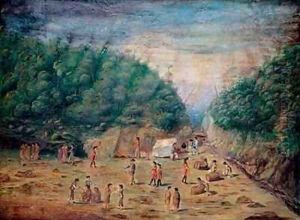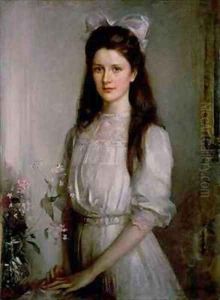Alexander Buchan Paintings
Alexander Buchan was a Scottish artist known primarily for his work as a landscape and topographical artist, as well as his skills in engraving. His exact birth date is not well-documented, but it is generally believed that he was born around 1750 in Scotland. Buchan is particularly remembered for his association with the famous circumnavigator Captain James Cook, with whom he undertook a voyage to the South Pacific.
Buchan was employed as an artist on Cook's first voyage aboard the Endeavour from 1768 to 1771. This expedition was a combined Royal Navy and Royal Society mission to the Pacific Ocean, largely to observe the transit of Venus across the Sun but also to seek evidence of the postulated Terra Australis Incognita or unknown southern land. Alexander Buchan was engaged to record the landscapes and peoples they encountered, a task of considerable importance during an era when such images were the primary means of conveying new experiences and discoveries to the European public.
Unfortunately, Buchan's contributions to the voyage were cut short. While at Tahiti, he suffered a seizure and died on April 17, 1795, in Matavai Bay. At the time of his death, he was preparing drawings of the transit of Venus. Buchan's early death meant that many of his potential contributions to the records of the voyage were left unrealized.
Despite his untimely demise, Alexander Buchan is recognized for his role in the history of British exploration and for his contributions to the visual documentation of Cook's first voyage. His surviving works from this period are considered important as some of the earliest European depictions of the Pacific islands and their inhabitants. These works serve as a valuable resource for understanding the initial interactions between Europeans and Pacific peoples, as well as the natural environments encountered by early explorers.

